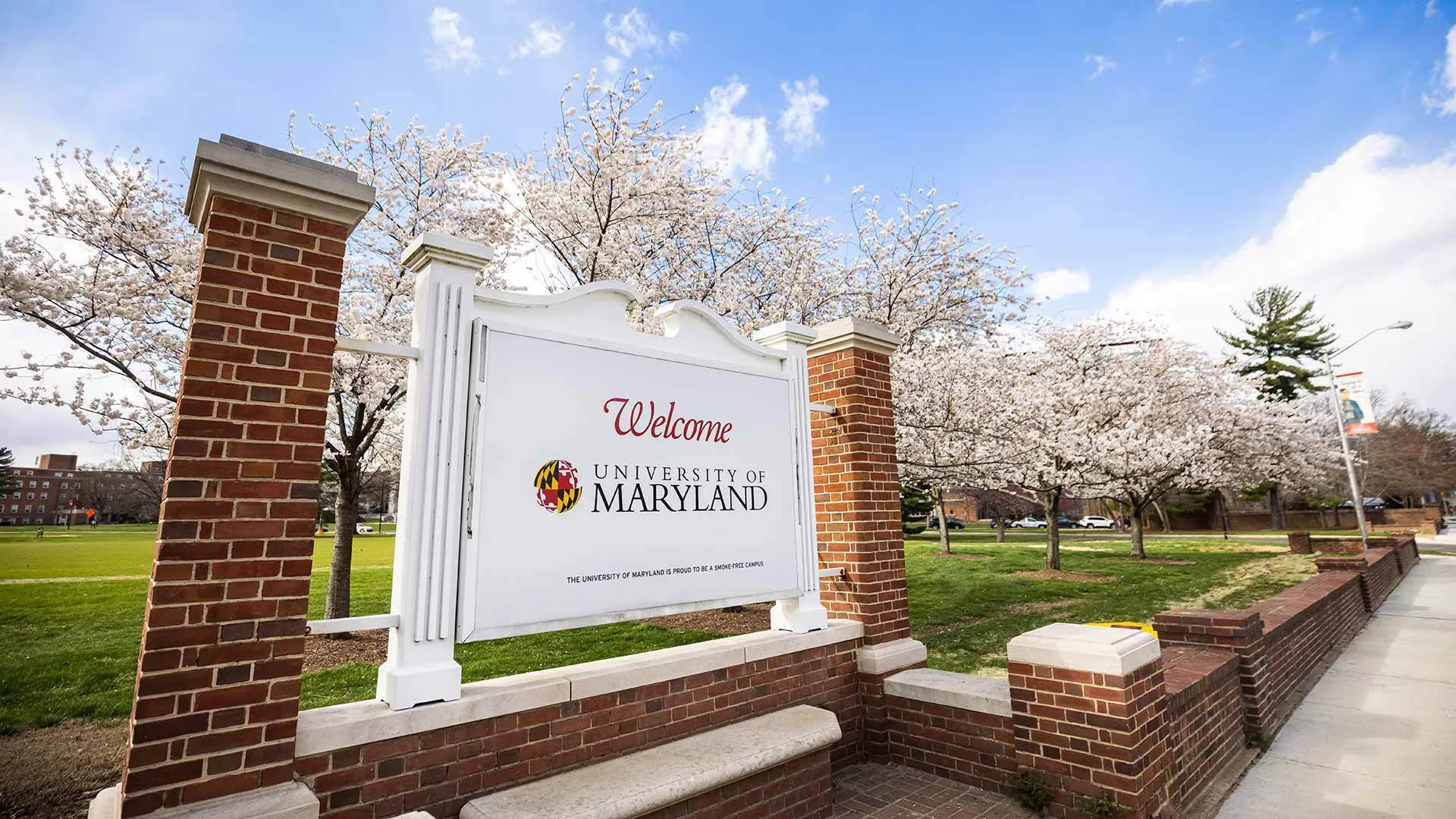- March 12, 2024
- By Karen Shih ’09
No need to pack the Metro or squeeze past throngs of tourists for the perfect cherry blossom photo this year: Stay on the University of Maryland’s campus to see the snowy florals of the famous Yoshinos.
UMD’s campus is home to not only the same ones that line the Tidal Basin in Washington, D.C., but also four other kinds of Japanese cherry trees, about 300 in total, some of which have already started blooming.
“They are exuberant and celebratory,” said Karen Petroff, director of landscape and special services. “To stand below with the delicate scent and beautiful blossoms, then see the petals waft down when a breeze comes along, it’s just an experience.”
First to flower on campus each year are actually Japanese apricots in mid-February, with pink and white varieties near McKeldin Library and Montgomery Hall. (UMD has some native cherry trees, but they’re not known for their florals—rather, you might notice purple stains from birds eating their fruit and leaving droppings on sidewalks or cars.)
Kicking off the ornamental cherries are the Okame, already visible near the Brendan Iribe Center for Computer Science and Engineering. Next come the Higan, which are less full and dramatic because they bloom twice a year, in the fall and the spring. The Sargent and Yoshino follow soon after, and the season ends with the Kwanzan in early May, the most vibrant of the bunch with pink carnation-esque balls of petals.
D.C.’s peak bloom is predicted to be March 23-26 this year, and UMD’s Yoshinos should follow that closely, said Petroff. While she urges students not to damage the trees by hanging hammocks, she hopes everyone will stop to admire them.
“I find my spirits are lifted from the first blossom I see,” she said. “It gives me a wonderful sense of optimism.”
Click through this interactive map created by the Arboretum staff to learn more about the five types of cherry blossoms—and exactly where to find them across campus.

Topics
Campus & CommunityTags
Student ExperienceUnits
Facilities Management